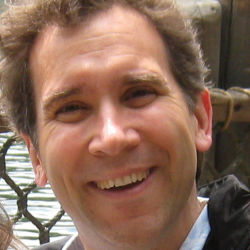
In the new NSF program "Computing Education in the 21st Century (CE21)" solicitation, proposers are explicitly asked to "design, develop, and evaluate the impact of pre-service and in-service efforts and strategies that enhance K-14 teaching expertise in computing." In Education-speak, "pre-service" means (mostly) undergraduate teacher education programs, and "in-service" means professional development for teachers in the classroom. The solicitation points to the "CS 10K" goal: To have 10,000 high school teachers capable of teaching the new Advanced Placement exam in Computer Science by 2015. Today, we have about 2,000 AP CS teachers in the United States.
How are we going to get to 10,000 high school CS teachers in five years? Here’s a quick answer: We’re not going to get there alone. We desperately need to involve people who know how to prepare and develop teachers — faculty in Schools (or Colleges) of Education across the country.
Let’s quickly set aside the idea of computer science faculty teaching all those 10,000 future high school teachers ourselves. What do we know about preparing lifelong career teachers? There are employers in IT who argue that we’re not particularly good at producing our existing graduates for today’s software development careers. High schools are a completely new kind of employer, with new kinds of stakeholders, and new kinds of jobs. Yes, we know computer science. They know the rest. We need a partnership.
How do we convince the Schools of Education that they want to work with us? That’s a harder problem. Budgets are tight. Education schools are not eager to develop new Teacher Education programs. The "Running on Empty" report that was just released shows that few states are teaching anything about computing, so there has to be a parallel effort to create demand for new computer science teachers. From the Education schools’ perspective, they already teach STEM teachers, and they probably already teach pre-service courses about "technology," though often that means "How to teach a class how to use Excel." Why should they branch out into Computer Science?
There is a good, mercenary answer: There’s money in it. Besides the new NSF CE21 program, the current US administration is funding more efforts in STEM education. The Department of Education and the White House have said clearly that Computer Science is part of STEM, but little of the STEM Education funding is aimed at Computer Science. That’s an opportunity with little competition right now. The time is ripe to form partnerships between CS and Education to improve computing education in high schools.



Join the Discussion (0)
Become a Member or Sign In to Post a Comment